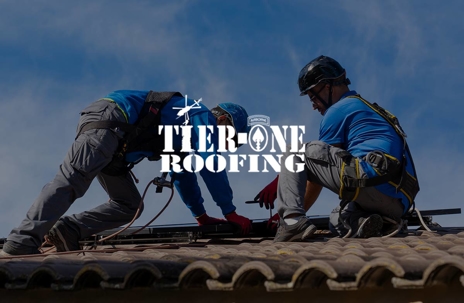What Your Last Roofer Didn’t Tell You (But Your Insurance Adjuster Will Find)
A roof that looks fine from the street can still cost you thousands. Not because it leaks today—but because it wasn’t installed right in the first place. And you won’t know it until an insurance adjuster gets up there after a storm.
We’ve seen it more times than we can count at Tier-One Roofing. A homeowner files a claim thinking the damage was storm-related. But then the adjuster climbs the roof and comes back with a different verdict:
“Installation defects. Not covered.”
That one sentence can make the difference between getting your roof paid for… or paying out of pocket for problems someone else created.
Let’s break down what those installation issues are, why they happen, and what you need to do if your roof was one of them.
Looks Fine? That Doesn’t Mean It Was Done Right
Roofing is one of those trades where it’s easy to hide poor workmanship. Unless you know what to look for—or unless a storm forces someone to really look—you’re not going to spot the shortcuts.
Here are a few of the most common install flaws we find on Oklahoma roofs:
Nails driven too high or at an angle (causes shingles to slip or lift)
Starter strip skipped entirely
No drip edge installed
Improper valley weaving
No ice and water shield in vulnerable areas
Incorrect ventilation or insufficient ridge venting
Any of those can invalidate your roof’s performance—and more importantly, your insurance coverage.
At Tier-One, we don’t just inspect for storm damage. We inspect the quality of the install, because your policy will.
Why Some Roofers Cut Corners
The roofing industry has a problem. After every big storm, out-of-town crews and inexperienced installers flood the area. They bid low, work fast, and leave problems behind.
Their incentives are speed, not longevity. And that shows up in little ways that become big problems:
Rushed flashing jobs
Underlayment not installed properly
Shingles stapled, not nailed
No permit pulled or code followed
By the time you realize your roof was mishandled, they’re long gone. And you’re left holding the bill.
Tier-One Roofing was built to be the opposite of that. We’re local. We’re veteran-owned. And we don’t tolerate shortcuts—ever.
What Adjusters Look For—and What They Flag
When an adjuster walks your roof, they’re not just looking for hail hits or missing shingles. They’re also trained to look for installation defects. And they know how to spot them.
Here’s what makes their report turn cold:
Misaligned shingles
Overexposed shingle reveals (easy to spot from any drone photo)
No underlayment visible in damaged areas
Drip edge missing from eaves or rakes
Improper nailing patterns
No starter strip visible during tear-off
Once these are flagged, the insurance carrier can say your roof failed due to installation—not storm damage. That’s not covered.
And just like that, what should’ve been a storm-related repair becomes a denied claim.
The Cost of a Bad Install Isn’t Just Money
It’s stress. It’s time. It’s phone calls and appeals and paperwork you never expected to deal with.
It’s having to explain to your spouse why the roof you thought was covered is now your problem to pay for. It’s scrambling to find a second roofer who will clean up the first guy’s mess.
It’s frustrating. And it’s avoidable.
Tier-One Roofing helps Oklahoma homeowners clean up those messes—but more importantly, we help prevent them.
Our inspections aren’t just surface-level. We evaluate everything about your install. We tell you what’s wrong, what’s borderline, and what’s solid. We show you what adjusters will see before they see it.
What You Can Do Right Now
If your roof is newer but you’ve never had it inspected since it was installed, don’t wait for a storm to expose it.
Call Tier-One Roofing. We’ll come out, inspect every detail of the install, and let you know if it’s up to code and insurance standards. We don’t charge for that inspection.
If we find an issue? We’ll document it, explain it, and give you options. If it’s something minor, we’ll handle it. If it’s something major, we’ll fight to get it fixed before the next storm makes it worse.
What If You Already Filed a Claim and Got Denied?
If your insurance already said "installation issue" and denied your storm claim, you’re not out of luck yet.
Tier-One Roofing can perform a second-opinion inspection, often catching what the original adjuster missed or misidentified. We’ve helped homeowners reopen claims by documenting:
Hail impact hidden under lifted shingles
Wind uplift that wasn’t visible from the ground
Improper installation that should’ve been caught during the last replacement
Sometimes it’s a matter of getting the right eyes on it.
And we’ll help you submit that new documentation properly, speaking the insurer’s language and citing specific building codes.
Why Tier-One Roofing Takes It Personally
We’ve served in combat zones. We’ve led teams under pressure. And we believe that when someone hires you to protect their home, you bring that same level of discipline and integrity.
That’s why we build every roof like it matters.
Because it does.
And when we find the sloppy work someone else left behind, we don’t mock it—we fix it. And we make sure you don’t pay for it twice.
We know the codes. We know the weather. And we know how to build a roof that won’t just hold up—but hold strong when the inspector shows up.
Call Before the Next Storm Does
If you’re not 100% sure your roof was installed correctly, don’t wait until your claim gets denied.
Call Tier-One Roofing today.
We’ll inspect your roof at no cost, identify risks, and help you fix what needs fixing now—before the wind or hail finds it first.
You deserve peace of mind, not paperwork.
We’re Tier-One Roofing. We get it done right, the first time.

